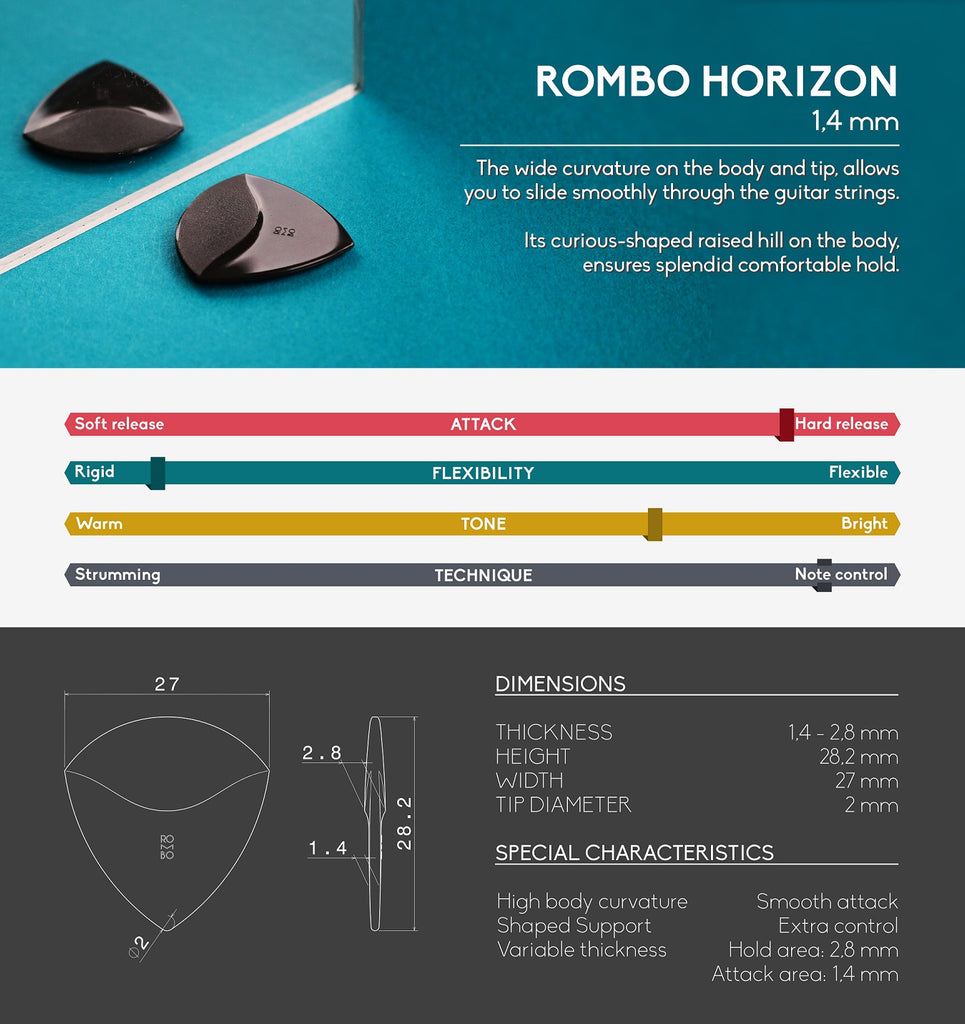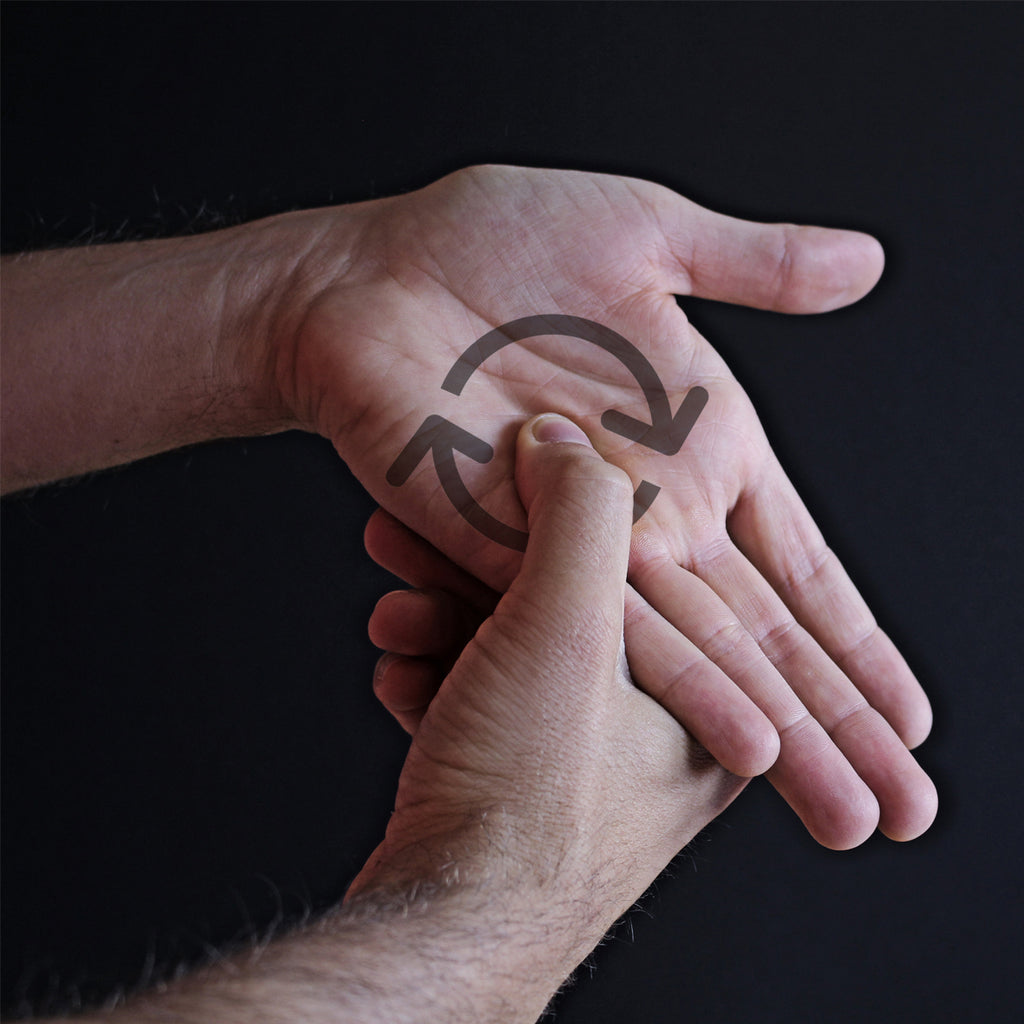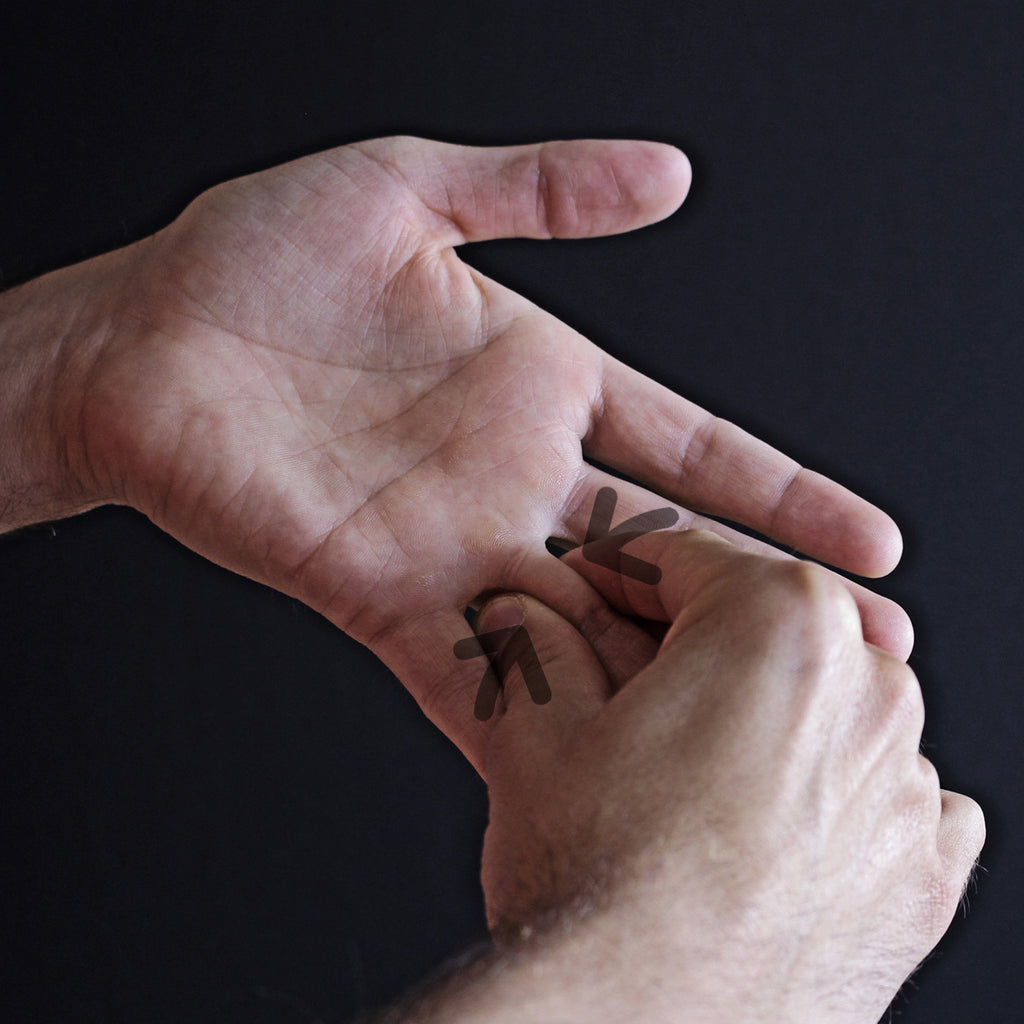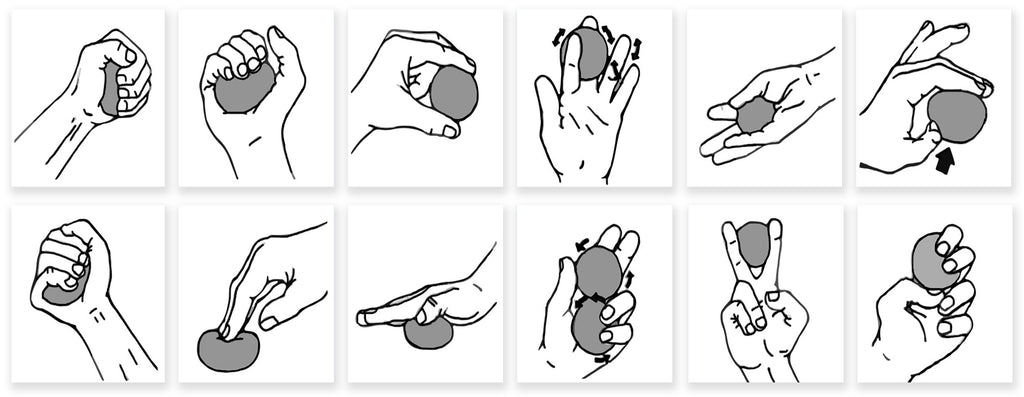Free shipping for all orders over 30 euros!
-
Shop
- Insights
-
About ROMBO
- Dealers
- Guitar Pick finder
- Gift Card
+Categories
- accessories
- bass
- bass pick
- bass picks
- bass plectrum
- bass plectrums
- beginner
- bright tone
- chose guitar pick
- chose guitar picks
- chose plectrum
- chose plectrums
- CrystalBright
- Diamond
- Diamond pick
- discipline and guitar
- DIY generation
- durability pick
- durable pick
- eco
- ecoblack
- find guitar pick
- find plectrum
- fingers vs picks
- grip
- grip guitar pick
- guitar accessories
- guitar advantages
- guitar benefits
- guitar career
- guitar health
- guitar injury
- guitar learn
- guitar lesions
- guitar lesson
- guitar method
- guitar noise
- Guitar noise plectrum
- guitar pain
- guitar pick
- guitar pick beginner
- guitar pick bevel
- guitar pick buy
- Guitar pick diamond
- guitar pick durability
- guitar pick durable
- guitar pick eco
- guitar pick features
- guitar pick grip
- guitar pick material
- Guitar Pick Noise
- Guitar Pick online
- guitar pick recycled
- guitar pick recycled material
- guitar pick special features
- guitar pick textures
- guitar pick thickness
- guitar pick variable thickness
- guitar picks
- guitar tone
- guitar warm-up
- guitarpick
- guitarpicks
- hold a guitar pick
- hold guitar pick
- hold guitar picks
- hold pick
- hold plectrum
- hold plectrums
- how to
- how to chose your guitar picks
- jazziii
- learn guitar
- lose guitar pick
- material
- materials
- mental health and guitar
- motivation and guitar
- music
- not to lose guitar pick
- Online guitar
- online guitar pick
- online guitar pick buy
- pick
- pick durability
- pick material
- pick noise
- Picks
- picks vs. fingers
- play bass fingers
- play bass picks
- play bass with fingers
- play bass with pick
- play bass with picks
- play bass with plectrum
- play guitar faster
- plectrum
- plectrum attributes
- plectrum beginner
- plectrum bevel
- plectrum characteristics
- plectrum features
- plectrum grip
- plectrum material
- plectrum noise
- plectrum recycled
- plectrum shape
- plectrum variable thickness
- plectrums
- Plek
- pua
- recycled
- recycled guita pick material
- recycled guitar picks
- recycled picks
- recycled plectrum
- Rombo Diamond
- rombopicks
- tendonitis guitar
- the guitar pick
- tone
- variable thickness
- warm tone
- warm-up guitar

Thick Guitar Picks vs Thin Guitar Picks
Thin guitar picks vs. thick guitar picks. This eternal battle has been a part of every guitarist's conversation for decades. It is time to finally evaluate both alternatives in depth.
The thickness of a guitar pick is generally measured in millimeters, and it is an attribute that influences many physical aspects like tone and flexibility. For most players, this is considered the most important attribute when choosing the right guitar pick.

However, after doing some online research, nobody seemed to really know how thick a guitar pick needs to be to be considered as a thick or heavy guitar pick. Where is the line?
Therefore, the first thing we did was to create a big online survey on our Instagram guitar community.
1- What are considered Thick Guitar Picks? Thoughts from the Guitar Community
The survey we created was online for 24 hours on an Instagram story and the participants were asked to answer two simple questions.
Personal preferences - thick picks or thin picks?
This question was the first one, and its aim was to see if guitar players prefer thick or thin guitar picks. Here are the results:

It seems that over two thirds of the guitar players prefer guitar picks considered as thick. Honestly, I thought there would be a 50-50 relation and this surprised me a lot.
What do you consider as a thick guitar pick?
This was the second question, and the guitar players could select different thicknesses they considered to be the “least thickness needed for a guitar pick to be considered as thick or heavy”.

The results showed that on average, a pick must be at least about 1.0 mm to be considered as a thick guitar pick.
These results are very interesting, since the information we found during the research claimed that a pick is considered as “thick” or “heavy” if it surpasses 0.8 mm thickness. We did not find any study or survey with more participants than ours.
Of course, we have to consider that we do not have any way to track more specific characteristics of the participants like skill level, music preferences, guitar type, age, and so on.
Average thickness of guitar picks over time
Additional research on this topic showed that during the past decades, the average thickness of the guitar picks has increased substantially. Thin guitar picks are even considered as vintage by many players due to the tone they produce.
This is no surprise, given that most modern guitar techniques and effects that require thick picks (like shredding) were non-existent during the 1950s and 1960s.

2- Why does guitar pick thickness matter?
The thickness of a guitar pick is one of the most influential attributes.
The guitar pick thickness influences:
- The flexibility of the pick
- The tone produced by the pick
- Volume and body of single notes
- The pick noise created by the pick
- The durability of the pick
- The control over the pick
- The feedback you will receive from the pick
A minimal change in the thickness of a guitar pick of only 0.2 millimeters (equal to two common paper sheets) is enough to change the properties of a guitar pick drastically.

3- Thick guitar picks vs. thin guitar picks:
Let's pretend there are no medium guitar picks and create a clear line that divides both thickness ranges, to make the differences between thick picks and thin picks more appreciable.
|
|
Thick / heavy guitar picks |
Thin guitar picks |
|
Flexibility |
Rigid/very rigid |
Flexible/very flexible |
|
Tone |
Warm/dark tones and mellow tones. |
Lighter tones, less bass. |
|
Volume |
Provide high volume. Broader dynamic range |
Maximum volume is limited. Lower dynamic range |
|
Guitar pick noise |
Reduced pick noise |
Noticeable pick noise |
|
Durability |
More durable |
Less durable |
|
Control |
High control of single notes |
Less control for single notes |
|
Popular techniques |
Lead guitar, shredding, sweep picking,... |
Rhythm guitar, strumming, tremolo picking |
|
Common type of players |
Intermediate and advanced guitarists |
Beginners, acoustic guitar players. |
Thick picks: Summary
Thick guitar picks will provide mellower/darker tones. The common rounded edges that can be manufactured with thicknesses over 1 mm – combined with their rigidity – increase the bass tones and the volume these guitar picks can provide, while reducing the pick noise the pick produces.
These picks provide more control over single notes and are usually the best option for lead guitarists.

Most advanced guitarists prefer thick picks, because in their guitar journey they develop new guitar techniques that can be performed better using this kind of picks. Thick plectrums provide more control when it comes to single notes and complex guitar pick techniques like pinch harmonics.
One of the biggest advantages of using heavy picks is the durability they provide. Nevertheless, the lifetime of a guitar pick is influenced by many other aspects, as we learnt in the article “Durability of a guitar pick”.
Thin picks: Summary
Thin picks are the best option for guitarists looking for brighter tones, especially using acoustic guitars and some strumming techniques on electric guitar.
The flexibility of these picks limits the maximum volume that can be achieved. This can be an advantage because it works like an analog limiter. This is especially helpful in a studio session, where the maximum volume achieved must be controlled.

Most beginner guitar players start using thin picks because their guitar skill set at the beginning includes guitar techniques like strumming.
Note control can be difficult with thin guitar picks. However, some players use this attribute for specific guitar techniques, like in surf music, where a super fast tremolo picking is required.
4- Example of a thick guitar pick: Rombo Jade
Rombo Jade is the perfect example of a thick guitar pick. Thanks to its thickness, a very large bevel edge could be implemented to be as sharp as possible, providing the precision needed when using these kinds of picks.

The size is small, a typical attribute of thick guitar picks, and its shape ends with a very pointy guitar pick tip for maximum attack.
5- Example of a thin guitar pick: Rombo Classic
Rombo Classic is the thinnest Rombo guitar pick. In the middle, it is only 0.38 mm.
This guitar pick is extremely flexible and has a medium/large size with a standard 5 mm diameter guitar pick tip.

In spite of its thickness, the dynamic range of the pick is great. This is caused by the material used in our picks.
6- The right guitar pick thickness for you
I am sure you already have an idea of your favorite guitar pick thickness. In case you don’t, it is probably because you are at the beginning of your guitar journey.
Is there a wrong guitar pick thickness to play guitar? Any pick you use to get sound out of your guitar can work, if the sound produced is the sound you are looking for. It is entirely a matter of personal preference.
If you are a beginner guitar player, I recommend you start with something like 0.75 mm, as I described here: "Guitar Picks for Beginners"
However, if you are an intermediate player trying to find a way to discover new guitar tones, I do not have better advice than to tell you to try many different thicknesses and start integrating other important aspects of the guitar pick in your decision, like materials, size, shape, etc...

The good news is, you will probably end up having 3 to 5 favorite guitar picks which you can use for different techniques. So, enjoy the journey and be open to experimenting with different tones and textures with your guitar!
7- Current guitar pick thicknesses at Rombo:
For this chapter I included the new guitar picks, which will be officially released during 2021.
As you can see on the thickness scale, there are still some slots missing (for example something like 0.6 mm), we will be filling them in the future, as we design new guitar picks.

However, we might repeat thicknesses if other aspects change a lot, for example the shape, the sharpness of the tip, the size of the pick, or other grip textures.
8- Variable guitar pick thickness
Another important factor to consider is that some picks do not have constant thickness along its design. But why?
As we did our research back in 2018, we found out that designing guitar picks with variable thickness comes with many advantages.
Let's take Rombo Origami as an example: The guitar pick tip is 0.75, but its hold area is thicker. This simple change makes the pick produce darker and mellower tones without losing much of its flexibility.

In the case of Rombo Diamond, the middle area (where all vertices collide) the thickness goes up to 2.65 mm. We increased this area after experiencing that the relation between the thicknesses along the guitar pick also increases the control over the pick for single notes.

In addition, with more thickness on a given material, you have more possibilities to introduce design elements, like the 3D geometries we use in our picks. These geometries have two positive effects: on one side, they enhance the grip of the pick because of the tilted surfaces, and on the other side, the guitar picks look very cool!
In short, variable thickness will make your picks more versatile and give you extra control.
9- Conclusion
Thick picks vs. thin picks will remain a hot, trendy topic in the guitar community.
However, if you are already an intermediate player with some knowledge about equally important aspects of a guitar pick like shape or material, spread the word to avoid confusion among the newcomers.
We have already discussed the huge variety of different guitar picks you can find online in our article “Guitar picks online” since this can be overwhelming for some beginners.
The best advice I can give you: love both thin and thick picks and try to understand why they are different. Both need to exist in a world where creativity and different tones and styles are needed!
Now it’s your turn, what is your favorite guitar pick thickness?

Do Guitar Picks Make a Difference? - Guitar Picks 2021
Reinventing the Guitar Pick: Rombo 2.0
In our first campaign, we focused on outstanding technology at affordable prices. We are now determined to take this to the next level and have designed our guitar picks as an extension to your hands, using the latest technology, materials, and smart models, with your comfort in mind.
We are now focusing on YOU, and your experience, using a fresh design.
Rethinking the Idea of a Guitar Pick
Guitar picks are the bridge between you and your instrument. A hidden hero in the hands of guitarists. A guitar pick is a very personal item and choosing the right one depends on several factors.
 Rombo Jade Guitar Pick Set in color Honey Yellow
Rombo Jade Guitar Pick Set in color Honey YellowBack in 2018, ROMBO was born with a mission: Question every aspect of a guitar pick, to redefine what the user really needs. We started our personal search for the perfect balance between tone and ergonomics.
We have learned a lot during the last 3 years, and finally, we are ready to offer new experiences to guitar and bass players around the globe.

Rombo Crisp Guitar Pick Set in color Graphite Black
Try Out Mix Guitar Pick Set
Fresh Approaches
During the creation of these new 4 plectrums, we used the following rules as a guideline:
● Work very closely with many professional guitarists.
● Question our own first designs
● Redefine what a user needs to get the best performance.
● Perform in-depth research, to find the best material improvements.
In addition, we conducted a big survey, (1552 guitarists from 31 countries participated), to define the thicknesses, shape, size, and even the names of the new guitar picks.
After a long product development process, we have reached the point where we are extremely happy with the results!

Rombo Horizon Guitar Pick in color Graphite Black
The constant Search for the perfect Material
We are using a thermoplastic polymer, which belongs to the family of the polyamides. This material is used in aerospace and automobile industries, and has high mechanical strength, excellent impact resistance (guitar strings), and superior aesthetic properties.
We believe we have achieved an excellent balance between sound, comfort, grip, aesthetic properties, and durability.
In addition, we offer all our picks in EcoBlack: A 100% recycled material from pre-consumer fibre waste.

Rombo Guitar Pick Set EcoBlack material

Special Attributes we always wanted for our Guitar Picks
When it comes to guitar picks there are four main attributes: thickness, shape, material, and size. These attributes define 80% percent of a guitar pick.
However, the last 20%, contains improvements, and attention to detail, making the playing experience much more comfortable, giving you better results, and a more enjoyable playing experience.
These aspects are essential, to get the most out of this guitar accessory.
Here are the 6 features we have defined for all of our ROMBO guitar picks:


A mirror polished guitar pick reduces friction between guitar pick and strings. With every impact, the guitar pick will suffer less friction and therefore wear down slower. The pick will glide better, and produces less pick noise.

All of our picks have variable thicknesses: The solid and thick body, gives you a better grip and control. The thinner tip will give you enough flexibility to achieve greater versatility when developing different guitar techniques.
What makes a Guitar Pick durable?
The attributes that define the durability of a guitar pick are as follows:
- Guitar Pick Material
- Guitar Pick Thickness
- Guitar Pick Tip Shape
- Guitar Pick Tip Texture
Harder materials will wear down slower. This is one of the reasons there has been a lot of research in the area of suitable materials for guitar picks.
The goal is to find a wear-resistant material, that keeps the tone characteristics that guitar players want, while still giving a good grip.
Other attributes of the pick that affect the durability, are the Tip Shape, and the Tip Texture. Very pointed guitar tips tend to wear down faster, because there is less material on the tip.
However, this problem can be partially solved with the right guitar pick tip texture. A polished tip on the guitar pick will cause less friction between strings and plectrum.
Surfaces and Textures on Guitar Picks: Finding the Balance
Textures on guitar picks, define not only the important aspects like grip, control, and friction between the strings and guitar pick, but also focus on the equally important details, like comfort, pick noise, and design.
We believe textures on guitar picks are essential for a tool that was designed to be held between your fingers.

The combination of two different surface finishes in the guitar picks, have convinced us, and our testers, of the potential gains a player can achieve:
- A polished tip for clarity, durability and control
- A micro-nodules texture in the centre of the guitar pick for the most comfortable holding without compromising grip

Rombo Jade Guitar Pick Set in color Honey Yellow

Rombo Prisma Guitar Pick Set in color Graphite Black

Rombo Horizon Guitar Pick Set in mixed colors

Rombo Crisp Guitar Pick Set in color Honey Yellow
The New Rombo Guitar Picks
ROMBO HORIZON - 1,4 mm
The wide curvature on the body and tip allows you to slide smoothly through the guitar strings. Its curious-shaped raised hill on the body ensures splendid comfortable hold.

ROMBO PRISMA - 0,8 mm
A classic shape enhanced by modern surface technology. The geometry on the main body has different height levels for the most comfortable holding and grip.

ROMBO CRISP - 1 mm
Medium thickness combined with geometric concave design surfaces. The result? unexpected flexibility with great bass tones. Its medium-sharped tip provides extra warm tones.

ROMBO JADE - 2,3 mm
Maximum precision. Perfect for shredding guitar techniques. Its wide bevel edge, combined with a decent body thickness, provides a supreme attack, without compromising bass tones.


7 Easy Warm-Ups Every Guitar Player Should Know
As a guitarist, the best way to start every practice session is by warming up.
In addition, integrating different techniques will immediately improve your skills and will prevent injuries.

Whether you are planning a studio session, a jam with your friends, or some solo relax sessions at home, a conscious warm-up before playing guitar is mandatory. No matter if you use guitar picks or play with the fingers, there are no excuses.

This 7-step warm-up will help bring your playing to peak level. Developing the habit of warming up your hands and upper body will improve your posture and make your playing look “easy” and relaxed.
1- Don’t Play Guitar with Cold Hands
Cold hands make guitar playing very difficult.
You will notice this during your first guitar chords. Your fingers and hands won’t be agile enough to play your guitar and you will struggle holding your guitar pick.
Running your hands under warm water is the fastest way to get the temperature your fingers need to improve the blood circulation.
Combine it with the step 2 and get the best results.

2- Massage your Hands before Playing Guitar
When it comes to guitar, our hands are our most precious tools.
The hand muscles tend to tighten up. In order to loosen them, you can do a hand massage.
Some musicians may hit a plateau or wall in terms of their speed or dexterity, because by not taking care of their hands properly, the muscles of the hand and fingers are tighter and less supple. It seems a no-brainer.
If you rely on your hands for your income/career, you want to do what it takes to keep them as healthy as possible.



A proper holding of your guitar pick is necessary to avoid pain. Do you know how to hold your guitar pick the right way? Click HERE and learn more.
3 -Shake your Arms, Hands and Body
Every muscle is connected. Your hands, wrists, forearms, shoulders and back should all be performing their best during your practice.
To get the blood flowing through your body, simply move your arms and legs, shake your arms and back, and then make a fist, opening and closing your hands at least 10 times.
This exercise will not only prepare your hands, but will also relax your body and help to get the preparation you need before playing your guitar.
4- Use a Ball and squeeze It
A ball is an excellent way to warm up your hands before you practice guitar.
If you implement this in your routine, you will be able to do every exercise quickly, in just a few days.
This method was mentioned in the article “Play Guitar Faster - Guitar Methods for Speed Playing”, which you can find HERE.
5 - Stretch your Fingers
The last thing to do, before moving on to playing your guitar, is to lightly stretch your fingers.
Stretching your fingers helps to enhance flexibility. It lengthens tight muscles and prevents injuries.

Playing guitar can cause fatigue to these areas, and stretching helps to keep the muscles loose and limber. It increases flexibility, and your range of motion.
Stretching your fingers before playing guitar will warm up muscle tissues and joints.
6- Play Something that is not emanding for your current Guitar Skills.
Try playing some simple exercises, melodies and/or chord progression.
Here some ideas you can use for your routine:
- Simple scales, such as the minor pentatonic scale.
- Riffs or songs you already know
- Technical exercises you already master (For both hands).
- Picking patterns – either fingerstyle or with a guitar pick

If you are using a guitar pick, you might have to practice some specific techniques depending on your music style. If you are not sure which guitar pick is the right one for you, check this guide HERE.
If your hand is still sore, repeat some of the steps. Especially in the winter months, as the hands can get cold very fast.
7- Take a Minute to concentrate and focus Yourself
Some guitar players keep playing the stuff they already know, and have given up practicing to improve.
Try to be focused on your role, and separate the habit of playing for fun or relaxing, from the habit of playing guitar for improving.

Take a minute, breathe, think about the next 90 minutes, and focus on the guitar.
Now you can avoid Guitar Playing Injuries, and improve your skills:
While playing guitar you are moving your muscles to make a specific, complex series of movements and hand positions.
With cold muscles and no time to adapt to your exercises, your hand tissues can develop micro-tears that lead to injuries or pain.
But that is not all, it is proven that the right warm-up will immediately improve skills like guitar speed, precision, concentration, and resistance.
Bonus Track: Take a Break!
Some guitarists play for hours.
If you are one of those ambitious musicians, trying to become one of the best 5% of guitar players, you need to take enough breaks and relax the muscles. 
Stand up every 60 minutes and repeat some of the mentioned exercises. The best way to do so is to set an alarm and be disciplined enough to stop your training, when the alarm goes off.
Leave a comment and tell us if this is useful!
Thanks!
- Shop
- Dealers
- Legal Notice
- Terms of Service
- Refund Policy
- Shipping
- Privacy Policy
- Contact us
- Press
- FAQ
Sign up to get the latest on sales, new releases and more…
By signing up you agree to our privacy policy.
© 2024 ROMBO.
registered brand
Powered by Shopify



